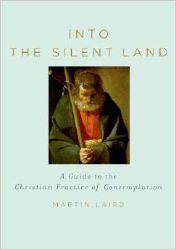
A reader of this blog wrote this question to me recently:
Hi Carl, just wondering if I could pick your brain? My experience of contemplation is that a little success — a “good,” peaceful session — can actually be problematic for future meditations. The problem for me is that I end up trying to repeat the good meditation in the future sittings, not accepting the present moment. I find that a peaceful meditation can thus put me back months in my practice! Have you found this situation in your experience?
Thanks for your note and yes, I am familiar with what you are describing.
Back in the 1970s a Tibetan Buddhist teacher named Chögyam Trungpa wrote a book called Cutting Through Spiritual Materialism, which has now become something of a modern classic. Although written as instruction for the practitioners of Buddhist meditation, the wisdom of this book is universal and applies across religious and spiritual traditions.
The gist of the book is that when we embrace a spiritual practice, often we approach it as a tool for self-improvement — for example, meditating for the purpose of finding inner peace or an improved sense of well-being. Without rejecting the many health-and-wellness related benefits that can accrue from a disciplined spiritual practice, the point behind Cutting Through Spiritual Materialism is that it is a mistake to reduce spirituality to a kind of therapeutic exercise. Chögyam Trungpa would point out that the problem with spirituality as self-improvement is that it ultimately leaves us imprisoned in the self!
As a Buddhist teacher, he advocates for liberation from the self, rather than mere self-improvement. Christians do not regard the self as a problem we must be liberated from, but we do see spirituality as a practice meant for gradually transforming ourselves from being self-centered to being God-centered. “I live, now not I, but Christ lives within me,” as Saint Paul put it. So if we make the mistake of reducing spirituality to therapy, we short-circuit the ultimate purpose behind spirituality — at least from a Christian perspective — which is actually quite similar to Buddhism’s quest for self-liberation: we seek liberation from all the ways that the self has usurped God’s throne as the true lord of our lives.
So with those initial thoughts in place, let’s revisit my reader’s question.
It’s very easy to evaluate our experience in meditation and contemplation: after all, we have been trained from childhood to appraise pretty much everything we do. “He’s good at sports.” “I can’t carry a tune in a bucket.” “You’ve got a knack for learning languages.” “She’s hopeless in the kitchen.” Thanks to our highly evaluative educational system, even young children understand the difference between an “A” student and a “C” student and learn quickly to assess what they are (or aren’t) good at — not to mention assessing similar strengths and weaknesses in their peers and pretty much everyone else.
So we discover practices such as lectio divina or centering prayer, and so it seems natural that we would begin to judge whether this or that experience is “good” or “bad,” “peaceful” or “distracted,” “mystical” or merely “ordinary.” Unfortunately, as soon as we begin to assess the quality of our contemplative practice, we have fallen into our own variation of spiritual materialism.
Dear reader, you have identified one of the traps here: have a “good” experience and we subtly try to recreate it or engineer something similar the next time (or the next thousand times) we sit down to pray. In other words, our prayer stops being about consenting to God’s hidden yet real presence, and becomes all about the self — am I having a “worthy experience”?
The corollary to this is the person who, finding silent prayer practices to be boring, or dull, or difficult because of how distracted their mind is, makes the decision to abandon the practice altogether. “I’m just not very good at centering prayer.” Once again, the self, rather than God, is in the driver’s seat.
A corollary to this is when we read a book like Teresa of Ávila’s Interior Castle which lays out a developmental map of how people can progress through the spiritual life — and we get focussed on deciding just how far along the path we are, as if that really made any difference to God!
What, then, should we do about “Contemplative Materialism”?
First, it’s important to be gentle with ourselves. We all fall into this trap, especially when we are beginners in the contemplative journey, and sometimes even veterans get caught up in it. So it’s good to try to have a sense of humor about this: “There I go, trying to decide if my prayer is ‘advanced’ or not!”
Ultimately, the key to cutting through contemplative materialism is simply learning to be non-attached to outcomes. Is my prayer practice fidgety and distracted? Well, then, it’s fidgety and distracted. Do you feel like you are just a blissed-out mystic? Well, then, that’s what you feel like, at least for today. Tomorrow is always another story. Whether we are tempted to appraise our prayer time as “good” or “bad” in whatever form, it’s important to simply acknowledge that tomorrow will be a different day and likely whatever we experience will be different.

Martin Laird, in his masterful book Into the Silent Land, compares these kinds of self-focused states to weather on a mountain. The point is this: the mountain has sunny days and rainy days, cloudy mornings and windy afternoons. The snow comes, the ice comes, and once in a while there’s a tornado. But the weather is always changing, so no point in getting worked up over it, whether good or bad. We climb the mountain not to experience the weather, but to be present with the mountain.
The mountain represents God, and the weather represents the mecurial nature of human consciousness. When we learn to find our stability in the solid rock of the mountain rather than the ever-shifting dynamics of the sky, we come closer to the real purpose we are there to begin with: to consent to divine love and divine presence in our lives, even when it operates below the threshold of our ordinary consciousness.
To the reader who submitted the question: good for you for noticing this dynamic. That simple noticing can be a helpful step toward gently letting it go. So… let it go! And blessings to you as you stand firmly on the mountain.
Enjoy reading this blog?
Click here to become a patron.
Stay in touch! Connect with Carl McColman on Facebook:














